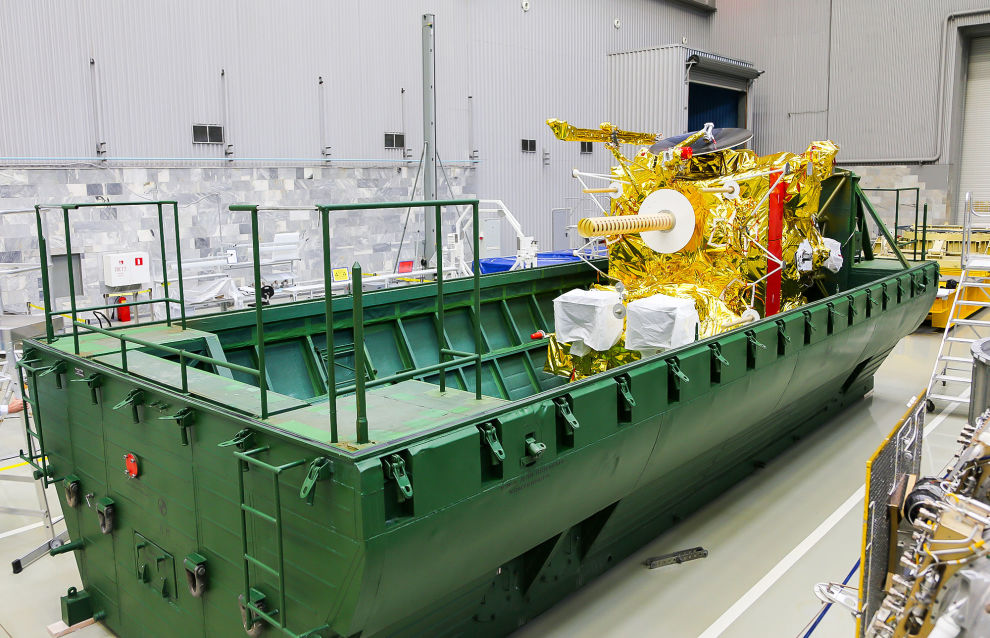Second Arktika-M satellite passes vacuum tests
The second Arktika-M hydrometeorological satellite underwent comprehensive electronics tests for three weeks in a thermal vacuum chamber at the Rocket and Space Industry Research and Test Center (Roscosmos State Corporation).
"The purpose of the tests was to confirm the performance of onboard systems in a vacuum for three thermocycles where the levels of cyclic change in the allowable temperatures of the instruments' seats change from close to the maximum value to close to the minimum value. These tests are one of the most important stages in the acceptance tests. After this test, a decision is made on the suitability of the satellite for its intended use," reports the press service of the Lavochkin Research and Production Association.
The test results indicate the satellite’s systems would perform as expected under conditions in orbit. The second Arktika-M satellite will continue being tested at the development center.
Arktika-M satellites are designed by Lavochkin Research and Production Association based on a modular design similar to the unified Navigator platform. They use almost identical target equipment as the Elektro-L satellite. The main difference in the operation of the satellites is the types of orbits in which the target tasks are performed: Elektro-L carries out regular (15-30 minute interval) imaging of the low and middle latitudes of the Earth from a geostationary orbit, and Arktika-M carries out similar imaging of the Arctic region and adjacent territories above 60° N latitude, from the area of apogee of the highly elliptical orbit of a Molniya type orbit. Taking into account the peculiarities of its orbit, Arktika-M has higher requirements for hardware radiation protection and increased solar battery capacity compared to Elektro-L.
The first Arktika-M spacecraft was launched into the target orbit in February 2021, and the second satellite is scheduled for launch later this year.
The two Arktika-M satellites, as part of the eponymous highly elliptical hydrometeorological space system, will provide 24-hour all-weather monitoring of the Earth's surface and the Arctic Ocean seas.
